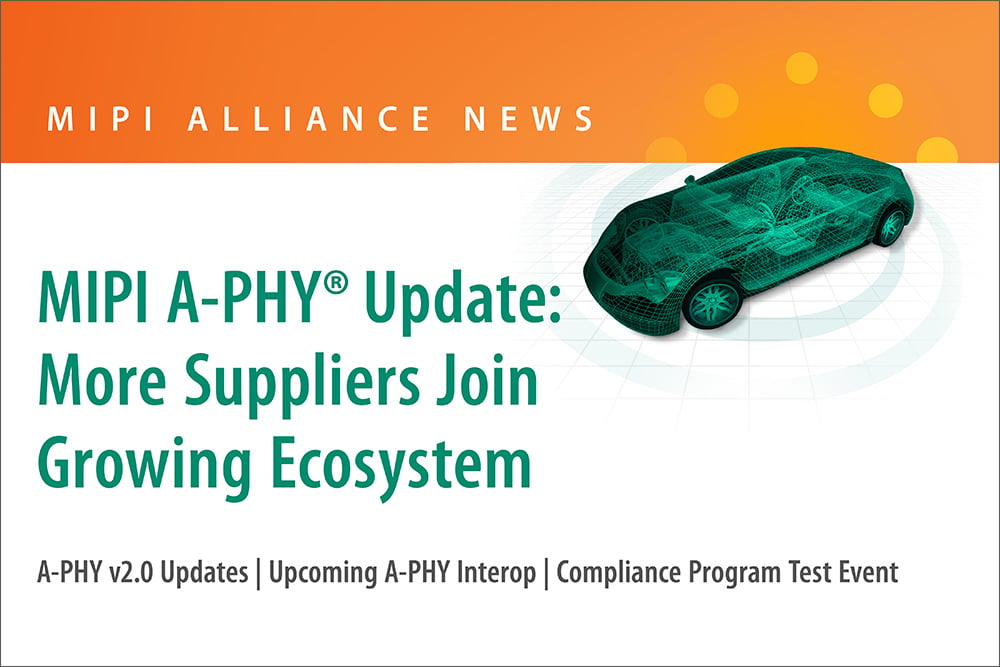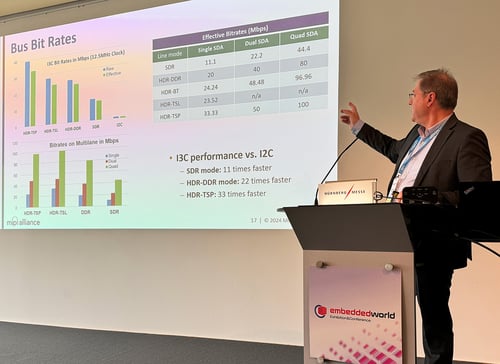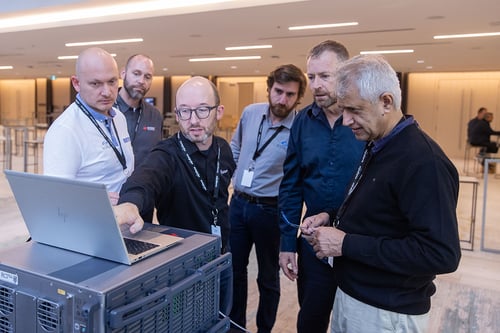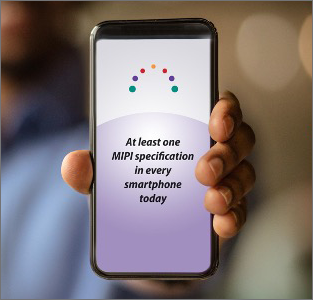2 min read
Growth of MIPI A‑PHY Automotive Ecosystem Continues to Ramp Up

- News & Events
- News
- Blog
Global original equipment manufacturers (OEMs) and other automotive supply chain vendors are joining the growing ecosystem that is designing products based on MIPI A-PHY® for high-speed image sensor and display connectivity. These companies recognize the resilience of the specification for its long-term roadmap and ability to support the bandwidth and performance requirements of next-generation ADAS and ADS applications.
- Recently MIPI member company Valens Semiconductor announced Mobileye has selected its A-PHY-compliant chipsets to provide the in-car, sensor-to-compute connectivity infrastructure for Mobileye EyeQ™ 6H automated and autonomous production programs underway with a group of global automotive brands.
- Valens Semiconductor and ESWIN Computing announced at the recent Auto Shanghai 2025 event that they have partnered to bring a comprehensive suite of MIPI A-PHY solutions to Chinese automakers, providing them with an opportunity to source locally manufactured, production-ready MIPI A-PHY chipsets for both sensor and display connectivity.
- These developments, along with previous MIPI and industry announcements of OEM and automotive vendor adoption, mark significant milestones for MIPI A-PHY as the automotive industry continues to coalesce around this open specification for high-speed connectivity.
For a listing of companies that have developed products or made A-PHY-related announcements, view the A-PHY ecosystem page.
Latest Version Supports Zonal and Other Emerging Architectures
Enhancements in MIPI A-PHY v2.0 were designed to support the higher bandwidth requirements for zonal and other architectures in next-generation vehicles, making it even more appealing to the automotive ecosystem. It doubles the maximum available downlink data rate from 16 Gigabits per second (Gbps) to 32 Gbps on a single channel and adds an additional uplink gear with an eightfold speed boost to support up to 1.6 Gbps.
It’s also important to note that no changes were made in the upper layers of A-PHY v2.0 so that migration from previous versions would have minimal impact, which aids implementation. Version 2.0 is fully interoperable with A-PHY v1.1 and v1.0, and devices using all three specifications can coexist on the same network.
The specification forms the foundation of MIPI's Automotive SerDes Solutions (MASS), an end-to-end framework for connecting cameras, sensors and displays with built-in functional safety, security and data protection.
MIPI Compliance Program and Test Events
MIPI Alliance is also in the process of rolling out an A-PHY Compliance Program, which, when fully implemented, will allow automotive original equipment manufacturers (OEMs) and system designers to validate that MIPI A-PHY devices have been tested and deemed compliant with the specification.
The A-PHY Working Group has already held several successful test events to support the program's development, with the next event scheduled for mid-July in Hasselt, Belgium.
In addition, the first official A-PHY Interoperability Event is currently scheduled to be held in conjunction with MIPI's next member meeting in late June in Warsaw.
IPR Licensing Structure for A-PHY
MIPI’s IPR terms are quite friendly to implementers, which also support A-PHY adoption and implementation. As with all MIPI specifications, members benefit from royalty-free licenses granted by all other members to patent claims that are necessary to implement the applicable MIPI specification. Beyond A-PHY, MIPI members also have license to the other specifications for use in ADS/ADAS applications, such as MIPI CSI-2® for cameras, all the A-PHY protocol adaptation layer specifications, the MIPI Camera Security Framework for protection of camera data streams, and MIPI DSI-2™ for displays.
Want to learn more about A-PHY and how to get involved in the MIPI automotive ecosystem? Find resources on our website—from webinars, to conference presentations, white papers and more. We also encourage you to check the website frequently for upcoming test and interop events, along with MIPI presentations at automotive-focused industry conferences.






